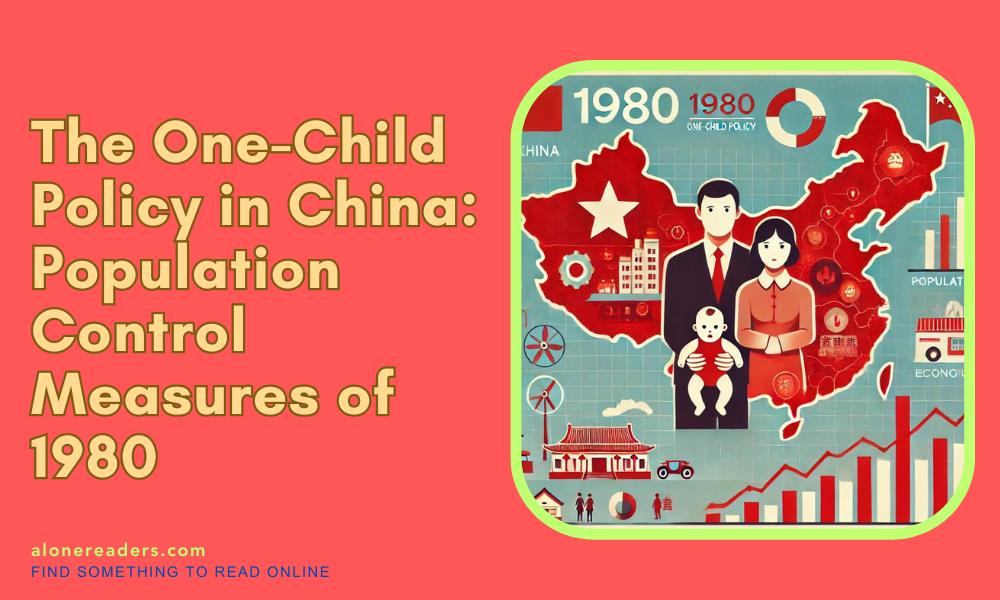
In 1980, China implemented one of the most ambitious and controversial social engineering projects in history: the One-Child Policy. This policy aimed to curb the country’s burgeoning population growth, which the government believed was hindering economic development and exacerbating poverty. The policy mandated that each family could only have one child, with some exceptions granted to ethnic minorities and rural families whose first child was a girl.
The roots of the One-Child Policy can be traced back to the post-Mao era, when Chinese leaders were grappling with the challenge of modernizing the nation. With a population of over 900 million at the time and projections suggesting it could double within a few decades, the government saw the need for drastic measures. The policy was introduced as a temporary measure, intended to last for a generation or so, to allow for economic reforms to take hold.
Enforcement of the One-Child Policy varied across the country and over time. In urban areas, where enforcement was stricter, families faced heavy fines, job losses, and social ostracism for violating the policy. Rural areas, on the other hand, saw more leniency, especially when the first child was a girl. This was due to the traditional preference for male children, who were seen as essential for labor and as caretakers of their parents in old age.
The policy had significant demographic impacts. By preventing an estimated 400 million births, it slowed population growth and allowed for more resources to be allocated per capita, contributing to economic growth. However, it also led to unintended consequences. The most notable was the skewed gender ratio, as a result of sex-selective abortions and infanticide. In some regions, the ratio of boys to girls became alarmingly unbalanced, creating long-term social issues.
Another consequence was the phenomenon known as the "4-2-1 problem," where one child was responsible for supporting two parents and four grandparents. This placed immense pressure on the younger generation, both financially and emotionally. The policy also led to a rapidly aging population, with fewer young people entering the workforce to support the growing number of elderly.
Socially, the One-Child Policy reshaped family structures. Only children, often referred to as "little emperors," received undivided attention and resources from their parents and grandparents. This led to concerns about the development of social skills and resilience among these children. On the other hand, many of these only children grew up to be highly educated and skilled, contributing significantly to China’s economic transformation.
The policy was gradually relaxed over the years. In the mid-1980s, exceptions were made for rural families, and in 2013, the government allowed families to have two children if one parent was an only child. Finally, in 2015, the One-Child Policy was officially replaced with a Two-Child Policy, allowing all families to have two children in response to the challenges of an aging population and shrinking workforce.
The legacy of the One-Child Policy is complex and multifaceted. Economically, it helped lift millions out of poverty and propelled China into becoming the world’s second-largest economy. However, the social costs were profound. The gender imbalance has led to millions of men unable to find wives, increasing human trafficking and social unrest. The aging population presents a significant challenge, with the potential to slow economic growth and strain public services.
Internationally, the policy has been criticized for its human rights implications. Coercive measures, including forced abortions and sterilizations, were reported, drawing condemnation from human rights organizations. The policy also sparked a global debate on the ethics of population control and reproductive rights.
In summary, the One-Child Policy was a drastic measure implemented to control population growth and spur economic development in China. While it achieved its primary goal of reducing the birth rate, it also created a host of demographic and social issues that the country continues to grapple with. The policy’s legacy is a testament to the complexities and unintended consequences of large-scale social engineering. As China moves forward, the lessons learned from the One-Child Policy will undoubtedly shape its approach to population management and social policy in the future.